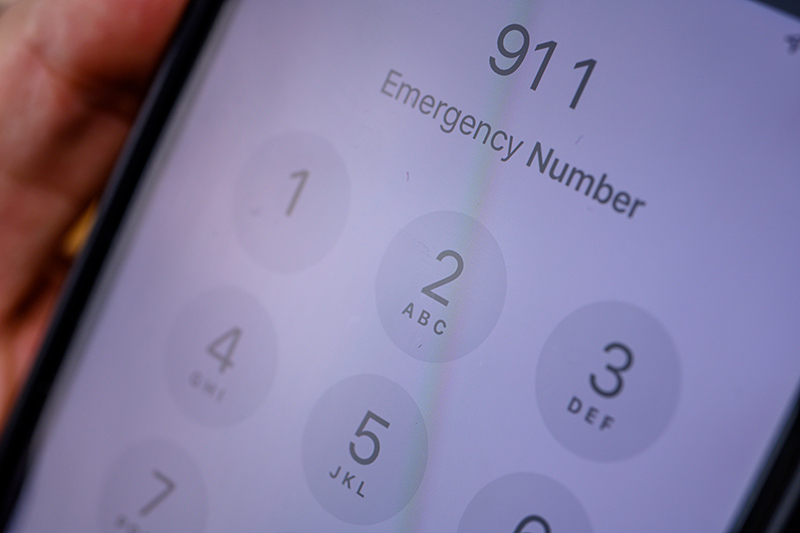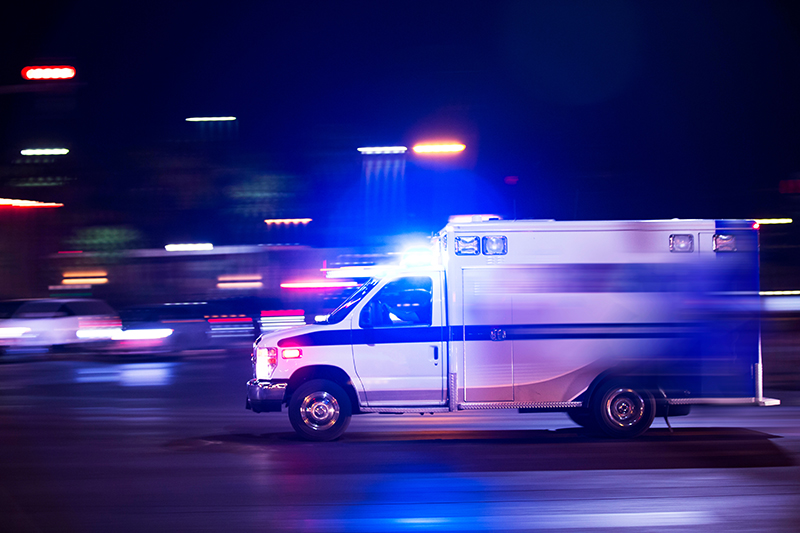Pedestrian Accidents in Portland
In Portland, the roads where most crashes occur often have fewer pedestrian crossings, more lanes, and higher speed limits, all of which pose a danger to pedestrians. Many of these roads, including state highways like 82nd Avenue and parts of Powell Boulevard, have recently come under the city’s scrutiny.
According to preliminary data from the Oregon Department of Transportation, there have been 542 fatalities on Oregon roads in 2023, out of those, 99 were pedestrians. [1]
When a negligent driver hits a pedestrian, there is very little chance the person on foot is going to end up without serious injuries.
Here are five steps to take after witnessing or experiencing a pedestrian accident:
1. Prioritize your safety
2. Gather information at the scene of the accident
3. Get medical help
4. Call the police and report the accident
5. Reach out to your insurance company
Safety First: Immediate Actions After an Accident
In the chaos following a pedestrian accident, immediate actions make all the difference. You should check for:
- Check for Injuries: Assess yourself and others involved in the accident for any signs of injury. Do not attempt to move anyone who appears seriously injured unless they are in immediate danger, as moving a person incorrectly could worsen their condition.
- Move to a Safe Location if Possible: If the accident is minor and you are able to move, carefully relocate to a safe area away from traffic to prevent further harm.
- Call 911 for Medical Assistance and Police Presence: Dial 911 immediately to report the accident and request medical assistance. Inform the dispatcher about any injuries and provide the exact location of the accident. Request police presence to document the incident and assist with traffic control if necessary.
- Turn on Hazard Lights and Use Flares or Cones: Activate hazard lights on involved vehicles to warn approaching drivers of the accident scene. If available, deploy flares or cones to increase visibility and prevent additional collisions. Stay vigilant and watch for oncoming traffic while awaiting emergency responders.

Document The Scene
Gathering information at the scene of a pedestrian accident can provide clarity for any future legal proceedings.
- Exchange Information with the Driver Involved: Obtain the name, contact information, driver’s license number, and insurance details of anyone involved in the accident. Provide your own information to the other party.
- Take Photos of the Accident Scene: Capture clear photographs of the accident scene from multiple angles, including damage to vehicles involved, skid marks or road debris, traffic signs, signals, and weather conditions. Ensure photos are taken of any visible injuries sustained by pedestrians or passengers. If you are injured, ask for assistance with this task.
- Collect Witness Contact Information: Seek out witnesses who observed the accident and ask for their names and contact information. Request brief statements regarding what they saw. Witness testimony can be invaluable in corroborating your account of the accident.
- Make Notes of Road Conditions: Note any factors that may have contributed to the accident, such as poor lighting, obscured visibility, or road hazards. Record the condition of the road surface, including any potholes, uneven pavement, or debris.
Seek Medical Attention
In the aftermath of a pedestrian accident, prioritizing your health and well-being is paramount. Even seemingly minor injuries can escalate if left untreated, underscoring the importance of seeking prompt medical attention.
- Importance of Seeking Medical Evaluation: Regardless of the severity of your injuries, be sure to have a thorough medical evaluation. Adrenaline and shock can mask symptoms initially, so don’t dismiss any discomfort or pain. Prompt medical attention ensures proper diagnosis and treatment, preventing potential complications down the line.
- Visiting a Healthcare Provider or Emergency Room: Seek medical care from a qualified healthcare provider or visit the nearest emergency room. Describe your symptoms accurately and provide details about the accident to aid in diagnosis and treatment. Follow medical advice diligently to optimize your recovery and mitigate any long-term effects of the injuries.
- Documenting Injuries and Treatment for Insurance Purposes: Keep detailed records of all medical consultations, treatments, and prescriptions related to the accident. Retain copies of medical bills, receipts, and any correspondence with healthcare providers. These documents will serve as evidence when filing insurance claims or pursuing legal action for compensation.
Remember, prioritizing your health is not only essential for your recovery but also strengthens your position when seeking compensation for damages incurred during the pedestrian accident.

Report the Accident
In Portland, reporting a pedestrian accident is not just a legal requirement, but also a vital step in ensuring your rights are protected and necessary assistance is provided.
- Filing a Report with the Portland Police Bureau: Contact the Portland Police Bureau to report the accident promptly. Provide accurate and detailed information about the incident, including the location, time, and parties involved. A police report documents the facts of the accident and may include valuable information for insurance claims and legal proceedings.
- Understanding Oregon’s Reporting Requirements for Accidents: In Oregon, you must report any accident involving injury, death, or property damage exceeding $2,500 to the Department of Motor Vehicles (DMV) within 72 hours. [2] Failure to report accidents as required may result in penalties or complications with insurance claims.
- Cooperating with Law Enforcement: Cooperate fully with law enforcement officers investigating the accident. Avoid admitting fault or making assumptions about liability, as these determinations are best left to legal and insurance professionals.
By promptly reporting the pedestrian accident to the appropriate authorities and cooperating with law enforcement, you ensure that the incident is documented accurately and that necessary support and resources are provided to all parties involved.
Contact Your Insurance Company
After a pedestrian accident in Portland, notify your insurance company promptly to initiate the claims process. Here are the key steps to take when contacting insurance companies:
- Notify Your Insurance Company About the Accident: Contact your insurance provider as soon as possible to report the pedestrian accident. Provide basic details about the incident, including the date, time, location, and parties involved. Be prepared to provide your policy information and any documentation related to the accident.
- Understanding Your Rights and Obligations: Familiarize yourself with your insurance policy’s coverage limits, deductibles, and exclusions. Understand your rights as an insured individual and the obligations outlined in your policy. Review the procedures for filing a claim and any deadlines specified by your insurance company.
- Avoid Admitting Fault: Refrain from admitting fault or accepting blame for the accident, even if pressured by insurance adjusters. Be cautious when providing recorded statements to insurance representatives, as these statements can be used against you during the claims process. Consider consulting with a Portland personal injury attorney before engaging in discussions with insurance companies to ensure your rights are protected.
By proactively contacting your insurance company, understanding your rights and obligations, and exercising caution when communicating with insurance representatives, you can navigate the claims process more effectively and increase the likelihood of a favorable outcome.

Potential Compensation for Damages
After a pedestrian accident in Portland, victims may be entitled to various forms of compensation to address their physical, emotional, and financial losses. Understanding the types of damages available can help accident victims pursue fair recovery. The key categories of compensation are:
- Loss of Enjoyment of Life
- Lost Wages
- Medical Expenses
- Pain and Suffering
- Property Damage
- Wrongful Death Damages
Each pedestrian accident case is unique, and the types and amounts of compensation available will vary based on the specific circumstances of the accident and the extent of the victim’s injuries.
Statute of Limitations in Oregon
According to the Oregon Revised Statute (ORS 12.110), the Statute of Limitations after a pedestrian accident in Portland is two years from the date of the accident. There are other factors, however, that can affect the Statute of Limitations and other earlier deadlines that may need to be met:
- Discovery of Injury: Sometimes, injuries from an accident may not manifest immediately. In such cases, the Statute of Limitations may begin from the date the injury is discovered or should have been reasonably discovered.
- Minority: If the accident involves a minor, the Statute of Limitations may be extended, allowing them to file a claim after reaching the age of majority.
- Government Entities: If the pedestrian accident involves a government entity, such as a city or county vehicle, there may be specific notice requirements and shorter timeframes for filing a claim.
- Comparative Fault: Oregon follows a modified comparative negligence rule, meaning if the pedestrian is found partially at fault for the accident, their recovery may be reduced. This can impact the timing of filing a lawsuit.
If you have been in a recent pedestrian accident and want justice, call our Portland pedestrian accident lawyer today for a free consultation.
Sources:
[1] Oregonian/OregonLive, J. R. (2023, December 22). Portland traffic deaths hover near 30-year high record in 2023. Oregonlive. https://www.oregonlive.com/commuting/2023/12/portland-traffic-deaths-hover-near-30-year-high-record-in-2023.html
[2] Oregon Department of Transportation : Accident Reporting and Responsibilities : Oregon Driver & Motor Vehicle Services : State of Oregon. (n.d.). Accident Reporting and Responsibilities : Oregon Department of Transportation. https://www.oregon.gov/odot/dmv/pages/driverid/accidentreport.aspx

